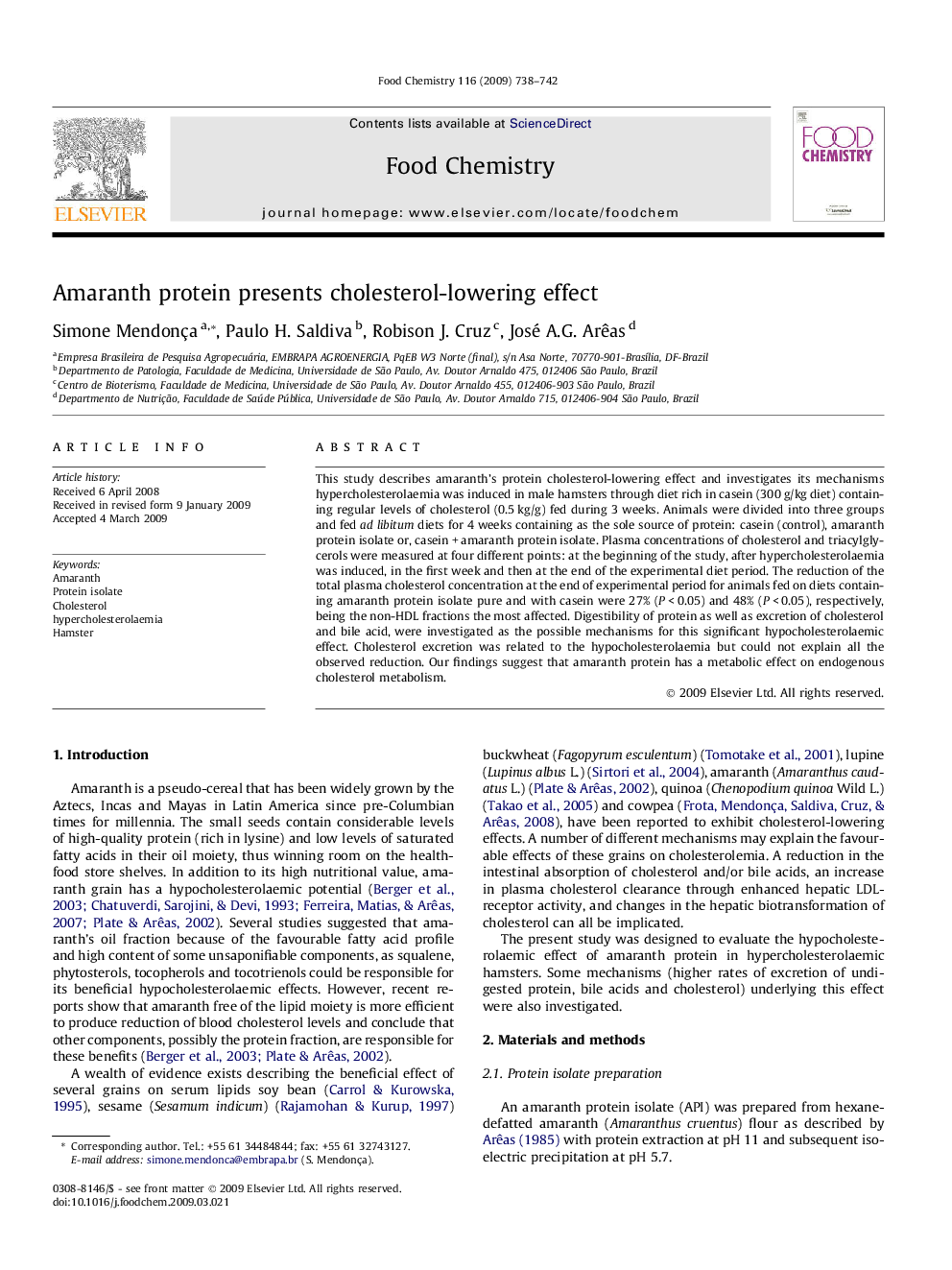| Article ID | Journal | Published Year | Pages | File Type |
|---|---|---|---|---|
| 1185954 | Food Chemistry | 2009 | 5 Pages |
This study describes amaranth’s protein cholesterol-lowering effect and investigates its mechanisms hypercholesterolaemia was induced in male hamsters through diet rich in casein (300 g/kg diet) containing regular levels of cholesterol (0.5 kg/g) fed during 3 weeks. Animals were divided into three groups and fed ad libitum diets for 4 weeks containing as the sole source of protein: casein (control), amaranth protein isolate or, casein + amaranth protein isolate. Plasma concentrations of cholesterol and triacylglycerols were measured at four different points: at the beginning of the study, after hypercholesterolaemia was induced, in the first week and then at the end of the experimental diet period. The reduction of the total plasma cholesterol concentration at the end of experimental period for animals fed on diets containing amaranth protein isolate pure and with casein were 27% (P < 0.05) and 48% (P < 0.05), respectively, being the non-HDL fractions the most affected. Digestibility of protein as well as excretion of cholesterol and bile acid, were investigated as the possible mechanisms for this significant hypocholesterolaemic effect. Cholesterol excretion was related to the hypocholesterolaemia but could not explain all the observed reduction. Our findings suggest that amaranth protein has a metabolic effect on endogenous cholesterol metabolism.
